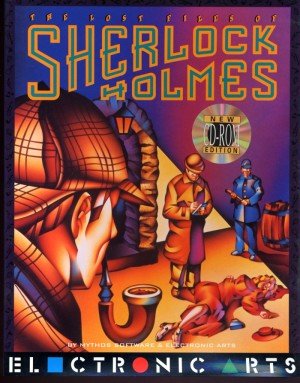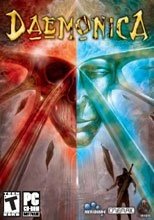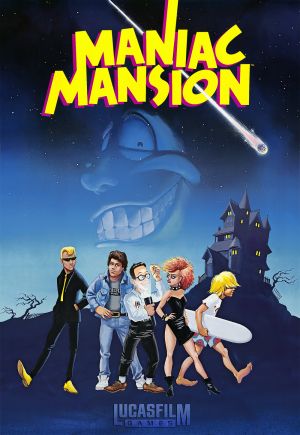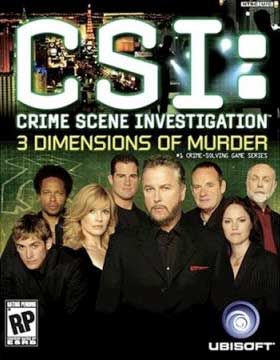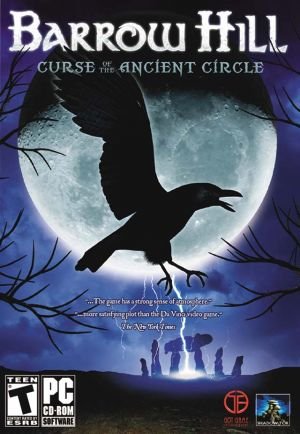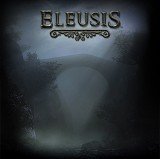Review for Puzzle Bots
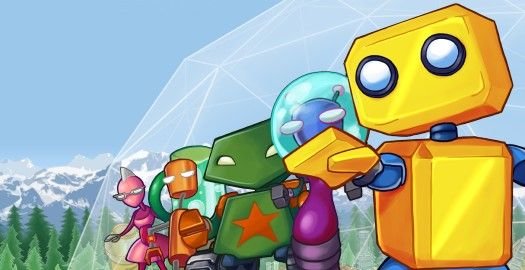
If a game full of pint-sized robots with singular abilities working together sounds familiar, that’s because Puzzle Bots is the commercial follow up to Erin Robinson's popular freeware adventure, Nanobots. The new game is not a direct sequel to its predecessor, but more a re-imagining of a similar concept, only far more polished and professionally designed this time around. If you’re new to Robinson’s world of mechanical heroes, Puzzle Bots is presented in a retro-classic, 2D point-and-click graphic adventure style. But don't let the familiarity fool you, as this title features a type of gameplay that few others offer, with its surprisingly human story tying together a sequence of clever, well-constructed environmental puzzle challenges.
In Puzzle Bots, players control five tiny robots who are curious about their larger-than-life surroundings and find their way into all kinds of mischief. They were invented in Dr. Hugo's Factory for Making Robots to be household helpers, but they aren't interested in doing chores. The bots live in a specially designed habitat with a laser gate that they regularly escape for unauthorized excursions, inadvertently affecting the relationships of the humans around them while they’re at it. As they sneak deeper into the hi-tech factory, they eventually learn that something odd is going on, and before all is said and done, they will have to work together to save both their creators and themselves.
The game plays out as a series of puzzle levels that are interwoven with cutscenes that move the story forward. Progression is extremely linear in this regard, as you cannot solve puzzles out of order or return to previous areas. As the story unfolds, the inventors go about their socially awkward lives while the robots watch on. Each cinematic sets up the next puzzle sequence or provides more insight into the lives of the employees and all their petty jealousies and interoffice romance drama. This presents a welcome counterpoint to the robot sequences, but really these interludes feel largely ancillary to the story that really matters: that of the bots themselves.
Gameplay begins with an introduction to the newly-created first robot, Hero, in a simple tutorial environment where you learn about his capabilities from his creator, Zander. Over time, similar tutorials familiarize you with the other bots and their inventors as well, though not all at once. Each robot has its own personality and is something of an alter-ego to its creator. For example, the female bots were created by women, and Hero, the most adventurous robot, was created by the most outgoing human. Each tutorial provides a simple set of problems to overcome while the inventor looks on, giving instructions under the clever guise of training the bot. In this way, these three-stage tutorials are well integrated and actually make up a fair portion of the gameplay.
In Puzzle Bots, like Nanobots before it, each robot has exactly one action (besides moving) that it can perform. Their abilities are:
• Hero – The only bot able to carry (and place) objects
• Ultrabot - Pushes objects that are too big for Hero to carry
• Kelvin - Heats objects with his flamethrower
• Ibi - Can swim and drag items in water
• Bomchelle - Throws bombs to destroy certain items
Because each bot has only one skill, the actual gameplay premise is rather basic. The only options ever available to perform are the current robot's action, moving the selected bot, or changing which robot you are controlling. Each of these options is carried out with a simple click of the mouse. Either you click an object you want to perform your action on, an empty part of the screen to move your robot there, or a different robot (or its onscreen icon) to change the active character.
While the mechanics are simple, the puzzles aren't necessarily easy. They are at first, when you have only one or two bots to control, but each subsequent puzzle segment gets more complicated as the next robot is introduced. By the later stages, there are five actions at your disposal, and figuring out which sequence of abilities and items to use is far more complex. For example, you can have Ibi drag something out of the water for Hero to transport to a new area, but only after Kelvin has cleared its destination with his flamethrower first. The combinations are always reasonable, but that doesn’t mean you won’t have to spend some time thinking about them. Some of the solutions are obvious, but overall the challenge is balanced nicely.
The limited nature of the gameplay means that there is no inventory management in Puzzle Bots. With the exception of Hero, no character can pick up items, and even he can only carry one object at a time. No items or clues are carried over between stages of the game, either. A few of the puzzles are time-based and take a mildly quick hand to perform one action while another action is carried out elsewhere. These puzzles take a slightly different mindset to solve then the others. You needn't worry about making a mistake or dying while experimenting, however, as you’re told early on that there’s no way to die, and your bots will refuse to do anything too dangerous.
It probably won’t be necessary, but a built-in help system can provide assistance if you get stuck at any point. Pressing the "Hints" button triggers a dialogue between the bots that eases you through the current problem at hand. This recharging hint system is timer-based, and waiting for more hints sometimes provides additional clues. It updates fairly frequently as you perform new actions, though occasionally it will keep repeating the same suggestion when other actions are needed instead. I actually didn’t even notice the hint button until my wife pointed it out during the last, most complex puzzle sequence of the game. It provided just enough information to help us work through the puzzle steps without giving the whole solution away. Further testing showed the system to be consistent throughout, with the first hint offering a general sense of what needs to happen, and the second giving some relevant details.
While players follow along by reading subtitles, the bots communicate with each other using a series of beeps and boops – classic robotic noises that make each bot sound distinctively different from one another. Their many action effects nicely suit the cartoon style of the game as well. There is some cheery, charming background music provided for ambiance throughout, and all the human characters – from Viktor the grumpy Russian scientist who's always trying to get himself fired, to Astrid, the sassy, pink-haired new girl – are fully voice acted and consistently well done.
Visually, because the mechanical protagonists are only tiny creatures on a vast human stage, the overall size of the Puzzle Bots world feels huge, even though you technically only interact with a tiny part of it. From the factory’s cafeteria and engineering facilities to its outlying grounds and inner courtyards, the bots find themselves in a subset of each location their creators visit. Generally, a new area is introduced first from the inventors’ perspective with a wide shot. Then the picture zooms in to the part of the scene where the robots now find themselves.
From their perspective, these areas are strange and foreign, allowing for interesting inferences. Where we see a counter top with a coffee pot, they see a launch pad with a space ship that will take them to their next adventure. The bots eventually end up at such destinations as a toy ship, the broken innards of a vending machine, a dollhouse, and even underwater to face the “monstrous” denizens of the not-very-deep. In all, the environments do a good job of playing with scale, and there is enough variety to really make you feel like you’re on an adventure, even though you never actually move beyond the large factory complex.
The simple, colourful graphics in Puzzle Bots are clearly retro-styled and generally charming to look at, but the technical quality can be uneven. In some cases the background images look blocky in the robot scenes. Perhaps this was intentional, to give the pixelized effect of "zooming" in from the larger human view, but the effect is not consistent. The many cinematics are done using the in-game engine, and although the animation is a bit choppy, these are also nicely presented overall, including the robots dancing around when they successfully find bonus items.
These bonus items are scattered throughout the different areas, and though they’re entirely unnecessary to complete the game, each one you find unlocks new concept art accessible from the game's menu. There are eight bonus items in total, and if you get all eight, a "bloopers" extra is opened up. Be sure to keep your eyes open for the bonus items, however, because you can never backtrack to find any you missed.
Of course, you could always just replay the game to collect any overlooked bonuses. The puzzles are always the same, so there’s little other incentive to start over, but the game only takes about three hours to play the first time through. Even with its short duration, however, Puzzle Bots is a welcome addition to the genre, as it’s an enjoyable game with unique and interesting gameplay, and loaded with plenty of cartoony charm. The puzzles could have been more challenging, particularly with a hint system always available, and the story conclusion seems to come out of nowhere like a Scooby-Doo mystery, but the experience is certainly fun while it lasts, and will surely leave you hoping for more bot adventures to come. It’s available only at the Wadjet Eye website, where there’s even a demo available to check out for yourself. Just a little sample should do, because in Puzzle Bots, smaller is definitely better.











